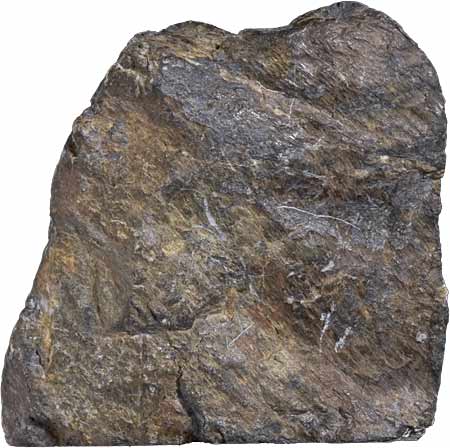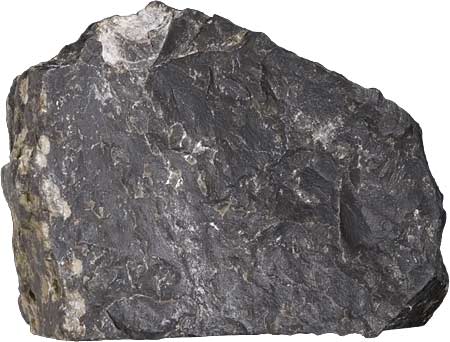Hornfels
Hornfels is a metamorphic rock formed by the contact between mudstone / shale, or other clay-rich rock, and a hot igneous body, and represents a heat-altered equivalent of the original rock. This process is termed contact metamorphism. Because pressure is not a factor in the formation of hornfels, it lacks the foliation seen in many metamorphic rocks formed under high pressure and temperature regimes. Pre-existing bedding and structure of the parent rock is generally destroyed during the formation of hornfels. It is often difficult to identify hornfels without microscopic observation, or knowledge of its association with a magma body, as it is typically non-descript in hand specimen. Under a microscope the structure of hornfels is very distinctive, with small, generally equigranular, mineral grains fitting closely together like the fragments of a mosaic or a rough pavement.

hornfels |
Other specimens - Click the thumbnails to enlarge 



|
Grain size - very fine grained; grains need to be observed under a microscope; can contain rounded porphyroblasts.
Hardness - hard (commonly displays conchoidal fracture).
Colour - variable, generally grey to black, but can form in a variety of colours dependent on parent rock composition.
Mineralogy - extremely variable, dependent on the original composition of the parent rock; generally contains minerals only formed under high temperature conditions, e.g. andalusite (Al 2SiO 5), cordierite ((Mg, Fe) 2Al 4Si 5O 18).
Other features - generally smooth to touch.
Uses - as aggregate in the construction and roading industries.
New Zealand occurrences - localised occurrences associated with igneous rocks, e.g. Whangarei Heads, Tokatoka (Kaipara area), Paritu (northern Coromandel Peninsula), west Nelson area.



